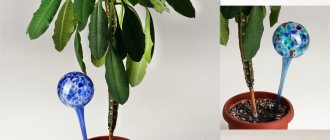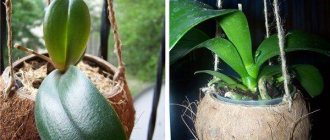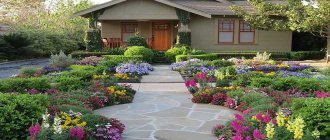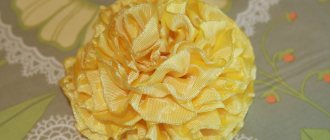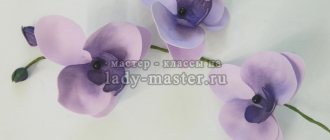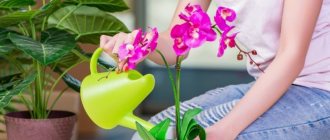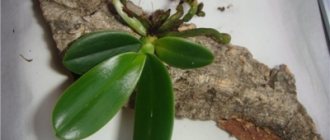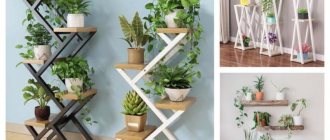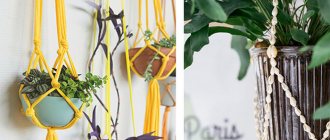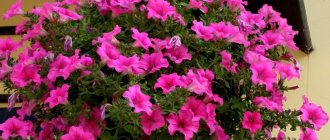The beginning of summer is the time when the main dacha chores are over, and gardeners finally get around to flowers in their flowerbeds and flower pots. How to properly plant flowers in plastic containers, ceramic pots and wooden boxes? How to make an outdoor planter with your own hands? And which flowers will grow well in flowerpots and containers, and which ones will not like it?
A container garden is a special element of the landscape that allows you to implement unusual ideas in the garden. They complement large forms, tying the floral decoration of the garden into a single composition.
And container gardens are mobile flower beds. With your help, they can “travel” around the garden, changing its appearance each time. If you want, for example, to decorate a shady seating area for the arrival of guests, then simply place a group of containers with bright flowers on it.
You can grow the most demanding flowers in a container, as it is easier to create specific conditions for such plants. And in case of unfavorable weather conditions, containers can be easily brought into the house.
You can also display containers in flower beds: this will come in handy when some flowers have already faded and you urgently need to decorate the empty spaces. This technique is especially good after the spring bulbs have faded - after all, in the second half of summer they don’t even have foliage left.
Containers can be of any size, but you should still try to ensure that even the largest container can be moved if necessary.
Containers for flowers: flower pots or flower pots?
Flower containers can have holes and be flower pots - or not have them and be flower pots. Both pots and flowerpots can be miniature, literally holding one flower, or they can be giants, with a diameter of more than a meter, capable of containing a fairly large tree.
Planting flowers in pots requires special conditions - because there is no water flow, and it is more difficult for the roots to breathe. As a rule, flower pots of appropriate size and shape are inserted into flower pots. However, it often happens that a pot has an original design, a non-standard shape, and it is impossible to choose a pot for it. It is also impossible to punch holes, otherwise the flowerpot will crack.
Well, you can plant flowers directly in pots, but then you need to provide especially good drainage: at least one third of the pots should be occupied by expanded clay and sand, and the soil should be light, not clayey. You need to water the plants in the pots carefully, little by little, using a small teapot or watering can with a thin spout.
Design ideas for the garden: hanging plants as part of compositions
Decorating the local area with flower arrangements is a common occurrence. Sometimes there is a garden on a personal plot, which only looks cheerful and elegant when it is in flower. But it can also be decorated with hanging flowers, organizing a small recreation area among the spreading tree crowns. You can use the following ideas.
Place a cart in an open area (so that the sun's rays penetrate) and fill it with pots with hanging flowers. Opposite, in the shade of trees, place a bench. The garden will be filled with colorful flowers, and there will be a great place for privacy and relaxation.
Don't rush to cut down a dead tree! On its branches you can hang pots with hanging flowers - the original oasis will delight you all summer with lush greenery and colorful flowers.
In open areas of the garden, you can place old tubs (and, if desired, new ones) and install flower pots on them. A walk through such a garden will bring a lot of pleasure.
When creating the compositions proposed above or invented independently, it is necessary to select the right plants so that they complement each other and favorably shade each other. To do this, you should pay attention to the photo, the names of hanging plants for the garden and try to purchase specimens that correspond to the image formed in your creative imagination or seen on the Internet.
Flower container material
Depending on the material, containers can be ceramic, plastic, wood and metal. Each material has its own characteristics, and planting in them should be done differently.
Ceramic pots are best suited for plants - moisture passes through them well, since ceramics are hygroscopic, maintain an optimal temperature regime, and plant roots “breathe” over the entire surface. But ceramic containers are fragile and heavy, starting from medium sizes.
Plastic containers retain moisture for a long time - you can go longer without watering. But they “steam” the roots, and they can only breathe from the surface. At the same time, plastic is light and durable.
Wooden boxes are almost as good as ceramic ones, but they are very short-lived, and if they get wet, they maintain high humidity in the container.
Metal containers are the most difficult. The roots do not breathe in them, and the containers themselves either become very hot or very cold, depending on the weather. When they heat up, the plants in them are too hot and they quickly evaporate moisture. When they are cooled, the roots are cold as a result, and the container is constantly damp. Metal containers are very durable and medium-heavy.
Lobelia
This herbaceous, densely flowering crop also comes from South Africa and belongs to the bellflower family, which you understand at the first glance at its perky blue-violet flowers. Lobelia is a perennial plant, but in our country it is grown as an annual, since it can withstand temperatures not lower than +7 degrees.
Bush varieties of lobelia look great in balcony boxes and outdoor tubs, while hanging varieties look great in hanging flowerpots.
How to plant flowers in outdoor pots correctly
The most important thing is to ensure the right ratio of soil and drainage.
For ceramic containers, it is enough to pour a little expanded clay on the bottom so that the bottom is closed. Then you can add soil and plant the plant. Planting in a wooden container is similar, but slightly more expanded clay is required. For a plastic container, on a layer of expanded clay, you need to pour a layer of coarse river sand 1.0–1.5 cm thick. You should try to choose a lighter soil, preferably mixing it with perlite.
When planted in a metal container, expanded clay occupies one third of the height of the container, followed by a layer of sand and light soil. However, in hot weather it is still better to move such containers into the shade, and in rainy and cold weather put them under a canopy or in a gazebo, and the place should be protected from the wind.
Accordingly, if your containers are flowerpots, then all specified drainage rates should be increased.
Bacopa
The South African heat-loving crop, otherwise called sutera, grows well in outdoor pots if planted in fertile, slightly acidic soil and watered regularly. Small flowers literally dot the lush bush, which looks chic thanks in part to the pretty leaves. The colors of bacopa are varied, but snow-white varieties are most common.
Sutera seedlings are taken outside in the second half of May, when the threat of sudden night frosts has passed, and there the plant charms passersby until the beginning of autumn.
Caring for flowers in containers
Features of caring for container flowers follow from the conditions that containers provide. Either way, containers have little soil, little nutrients, and often little moisture. Therefore, plants in containers need to be watered and fed much more often than in open ground. You can use the same fertilizers as for the main flower beds in the garden, or you can buy special, more concentrated ones, usually sold in bottles.
Be sure to cut off faded inflorescences from time to time; this should be done much more often than with flowers in the ground.
Petunia
This annual is popular because of its incredible variety of colors. Petunia is universal; it can be kept either indoors or in a flower bed. Cascading varieties are ideal for the street, and they have been given a separate term - surfinia. They hang picturesquely from flowerpots and can reach a length of 2 m.
Petunias love sunlight and are afraid of strong winds. It can damage tender shoots, so it is better to keep the plant on a glazed balcony facing south or southeast.
What flowers to plant in containers
Not all flowers are comfortable in small containers. If you have large containers with a diameter of more than 30 cm, then you can plant any garden flowers in them, and if your containers are more than 45–50 cm in diameter, then even perennials.
If you want to plant a perennial and the container is smaller than the required size, you will need to bury it in the ground to surface level during the winter so that the flowers can successfully overwinter.
If you have small containers, then it makes sense to plant flowers that are undemanding in terms of soil volume. These are petunia, lobelia, violas, ageratum, marigolds, low-growing varieties of zinnias, asters, daisies, verbena, salvia, calendula, begonia, “Jolly Fellows” dahlias, all spring bulbs, gladioli.
But nasturtium is very capricious in this regard. Decorative sunflower loves large containers; in small containers it can only grow in a very “reduced” version. Climbing flowers also do not tolerate a small volume of soil, of which the only exception is sweet peas, and even then to a certain extent.
Annuals
Annuals are suitable for summer residents who like to regularly change the location of crops on their site. Each time you sow new flowers in the pots, you can update the design of the landscape composition and “play” with the color scheme. Annuals are unpretentious, they do not need to be brought indoors for the winter, which makes care easier and does not create additional problems for the owner. At the same time, many of them can be used as perennials: to do this, it is enough to move the pots indoors with the onset of cold weather.
Related article:
Symphiandra: types, cultivation
Bacopa
A relatively new variety of hanging crops for a summer cottage. Her homeland is South America. An amazing property of bacopa is that it is suitable for decorating artificial reservoirs.
The shoots of the bush curl and form a large ball. The leaves are bright, light green. Bacopa blooms with small buds of different shades. They appear on shoots several times during the summer with a break of 20 days. The bush is unpretentious and goes well with other flowers in one composition.
Begonia
A beautiful ampelous flower with reddish shoots and carved leaves. But what gardeners are most attracted to are the buds. They are double or semi-double, reaching 8 cm in diameter. The color of the flowers is very diverse: from white to vanilla yellow and orange.
Verbena
An annual plant that can easily overwinter indoors. Found in the wild in South America, Asia, and Canada. In Russia, it is grown to decorate personal plots.
Verbena is distinguished by dense carved leaves of a dark green hue. The flowers are small, their color varies from white to pink and purple. Among the newest varieties, Moon Riven with amazing lavender buds and Imaging with shoots up to 50 cm long and lilac inflorescences stand out.
Interesting! Cascading flowers for pots
Geranium
The plant is better known as an indoor plant, but it can also be grown outdoors in pots. It was brought to Europe from South Africa, where it grows wild. The shoots reach a length of 1 m. The leaves are round, bright green, with a slight edge.
Related article:
Hardening roses: flower hardening phases
The buds are shaped like stars. They are collected in 30 pieces in racemose inflorescences. The shades are varied: from white to purple or lilac. There are also two-color geraniums, with spots, borders or streaks.
Calibrachoa
Even 20 years ago, the plant was considered a relative of petunia. But it was recently discovered that these are completely different species. The buds are small, usually purple, their throat is bright yellow and stands out against the background of the rest.
The leaves are small, oblong. The shoots curl and gradually become woody. Today there are many varieties of calibrachoa with different colors of inflorescences, so gardeners can choose the right variety for themselves and create bright landscape compositions.
Petunia
A popular plant with a wide variety of colors of inflorescences. Shoots of hybrid varieties, such as Fortuna Wave, reach a length of 1 m. Propagated by seeds or cuttings.
Petunia blooms all summer. Its buds are large, catchy, have a pleasant aroma, and can be double or simple. Although the crop does not require special care, it is afraid of an abundance of moisture and dies during prolonged rains.
Good to know! How to properly pinch petunia
Surfinia
Refers to the ampelous varieties of petunia. Its shoots grow up to 2 m. Compared to ordinary petunia, surfinia does not die from the abundance of moisture, does not break under gusts of wind, maintaining its decorative appearance.
The flowers are large, up to 9 cm in diameter, with a dark spot from which light veins radiate. Surfinia delights with its bright buds all summer. It produces almost no seeds, so propagation occurs by cuttings.
Related article:
Orange garden flowers
Fortunia
Another hybrid of petunia, characterized by bright large inflorescences and long shoots up to 1 m. Like surfinia, it easily tolerates rain, does not break and does not lose its decorative effect. The buds are distributed along the entire length of the shoot. When grown in a pot, it forms a continuous carpet.
Flowers in the country: how to design a container garden
Containers can, of course, be placed arbitrarily within the kindergarten. It will still be beautiful. But you can add some design elements for a container garden:
- make a small (5–10 cm) podium;
- build a wooden garden shelf with steps;
- surround the container garden with a ready-made decorative fence;
- place containers in the garden according to some geometric pattern;
- put beautiful stones (not too large) between the containers, arrange garden figurines;
- place small solar-powered lights in some containers;
- sprinkle the free soil in containers with decorative pebbles or shells;
- wrap large containers with embossed synthetic fabric, burlap or coconut copra;
- placing plants in approximately identical containers in shape, color, material - this is the most stylish garden option. If all the plants are in approximately the same containers, a unified impression will be created, and the flowers themselves will attract attention;
- set up a container garden on the steps of an old staircase. To do this, both the ladder itself and the containers need to be painted in a harmonious color scheme.
If all the containers in your garden are different, you need to come up with some kind of story for combining them. You can, for example, make such a garden a monogarden - the containers are all different, but the flowers are of the same type, for example, only petunias. Or supplement the garden with containers with plants that have discreet flowers but decorative foliage, such as hostas and kochia. Another option is to plant flowers in each container of the same color as the container itself. For example, in your garden there is a container with a picture of red tulips on it. This means planting a plant with red flowers in it (not necessarily tulips, although this is impressive). And plant ageratum in a blue container.
